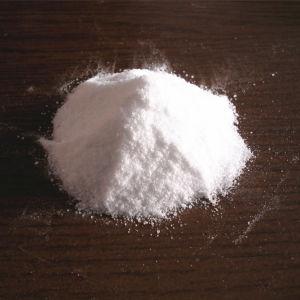Sodium Hexametaphosphate: An Insight into this Multi-Purpose Compound
Introduction to Sodium Hexametaphosphate
SHMP is an inorganic polymer compound with the chemical formula (NaPO3)6. It is formed from the condensation of multiple orthophosphate (PO43-) units. SHMP has a non-linear, crystalline structure and is commonly used as a processing aid, sequestrant, and water softener.
Uses and Applications of Sodium Hexametaphosphate
Food Processing
SHMP has a variety of applications in the food industry. It is commonly used as an anti-caking agent to prevent clumping in powdered foods like cheese, milk powders, dried fruits and seasonings. Its anticaking properties allow for a free-flowing product. SHMP also functions as an emulsifier and stabilizer in processed meats, canned foods and frozen doughs. It helps bind ingredients together and improves texture.
Water Treatment
A main use of SHMP is as a builder in detergents and cleaning products. In hard water areas with high mineral content, SHMP effectively sequesters calcium, magnesium and heavy metal ions to prevent them from interacting with soap. This allows surfactants to work more effectively. SHMP is also used to soften water in industrial processes like boiler feedwater, paper manufacturing and mining operations.
Meat Processing
SHMP has tenderizing properties that make meat fibers more pliable. It is frequently used in ground meat and sausage production to prevent moisture loss during cooking. SHMP's ability to bind water molecules improves the texture and juiciness of finished meat products. It also functions as an emulsifier in processed deli meats to distribute fat evenly and stabilize textures.
Dental Applications
The high cleaning power of SHMP makes it useful in teeth whiteners and tartar control toothpastes. It actively attaches to inorganic stains on teeth from foods, coffee and tobacco. SHMP can then be brushed away to physically remove discoloration from enamel without abrasion. It also sequesters calcium in dental plaque and tartar, inhibiting their remineralization on teeth.
Water and Wastewater Treatment
In municipal water treatment, SHMP works as a flocculant agent. Its linear charge density allows it to bridge and bind together suspended solids in water. This causes them to coagulate into larger particles that are easier to remove through filtration or sedimentation. SHMP has similar uses in industrial wastewater processing, helping clarify runoff before discharge or reuse.
Safety Profile of SHMP
Regulatory Status
SHMP is considered safe for use in food and personal care products by regulatory bodies worldwide. In the US, it is approved by the Food and Drug Administration (FDA) as a food additive classified as GRAS (Generally Recognized As Safe). The European Food Safety Authority has also deemed SHMP safe for its intended food uses at the approved specifications.
Toxicology Research
Animal studies on SHMP's toxicology have found it to have very low oral and dermal toxicity. No adverse effects were observed even at very high doses far exceeding expected human exposures. SHMP is not readily absorbed by the skin or digestive tract. It is eliminated from the body unchanged and does not bioaccumulate in tissues over time. No evidence suggests SHMP poses risks to human health or the environment when used appropriately.
Product Handling Considerations
As with any chemical product, precautions should be taken when handling SHMP in industrial settings. Safety equipment like gloves, eye protection and dust masks are recommended, especially for tasks that could generate airborne particles. In concentrated form, SHMP dust may cause mild irritation to eyes and skin on contact. However, no chronic health issues are associated with occupational exposures to SHMP below established exposure limits.
Sustainability of SHMP Production
Manufacturing Process
SHMP is commercially manufactured through a cascade of acid-base chemical reactions between phosphoric acid and soda ash. A wet process sees these inputs autoclaved under high heat and pressure to yield a concentrated SHMP solution. This is then dried into a crystalline solid powder product. Recent optimizations to the production technology have improved its efficiency and reduced environmental impacts.
Raw Material Sourcing
The key starting materials for SHMP synthesis - phosphate rock and trona - occur widely as natural mineral deposits that can be mined sustainably. Phosphate rock reserves in particular are fundamental to global food security and expected to last for centuries at current rates of usage. Strategic sourcing and recycling help ensure responsible stewardship of these critical resources into the future.
Emissions Management
Manufacturing emissions like wastewater effluent are closely monitored and treated as needed before environmental release or discharge. Producers implement emissions controls and recycling systems to minimize contamination and conserve water usage. Life cycle assessments also track SHMP production's carbon and water footprints to identify reduction opportunities through technology and process advancements over time.
In summary, sodium hexametaphosphate is a multi-purpose chemical with broad applications as an anti-caking agent, sequestrant, water softener and processing aid. Its versatility stems from SHMP's unique linear molecular structure and ability to modify textures, bind ingredients, and capture mineral ions. Decades of research has deemed the compound safe at normal usage levels in both food and non-food applications. Looking ahead, innovation in SHMP manufacturing aims to enhance its sustainability credentials through improved efficiency and reduced environmental impact. SHMP thus continues serving myriad important industrial and consumer product functions well into the future.

